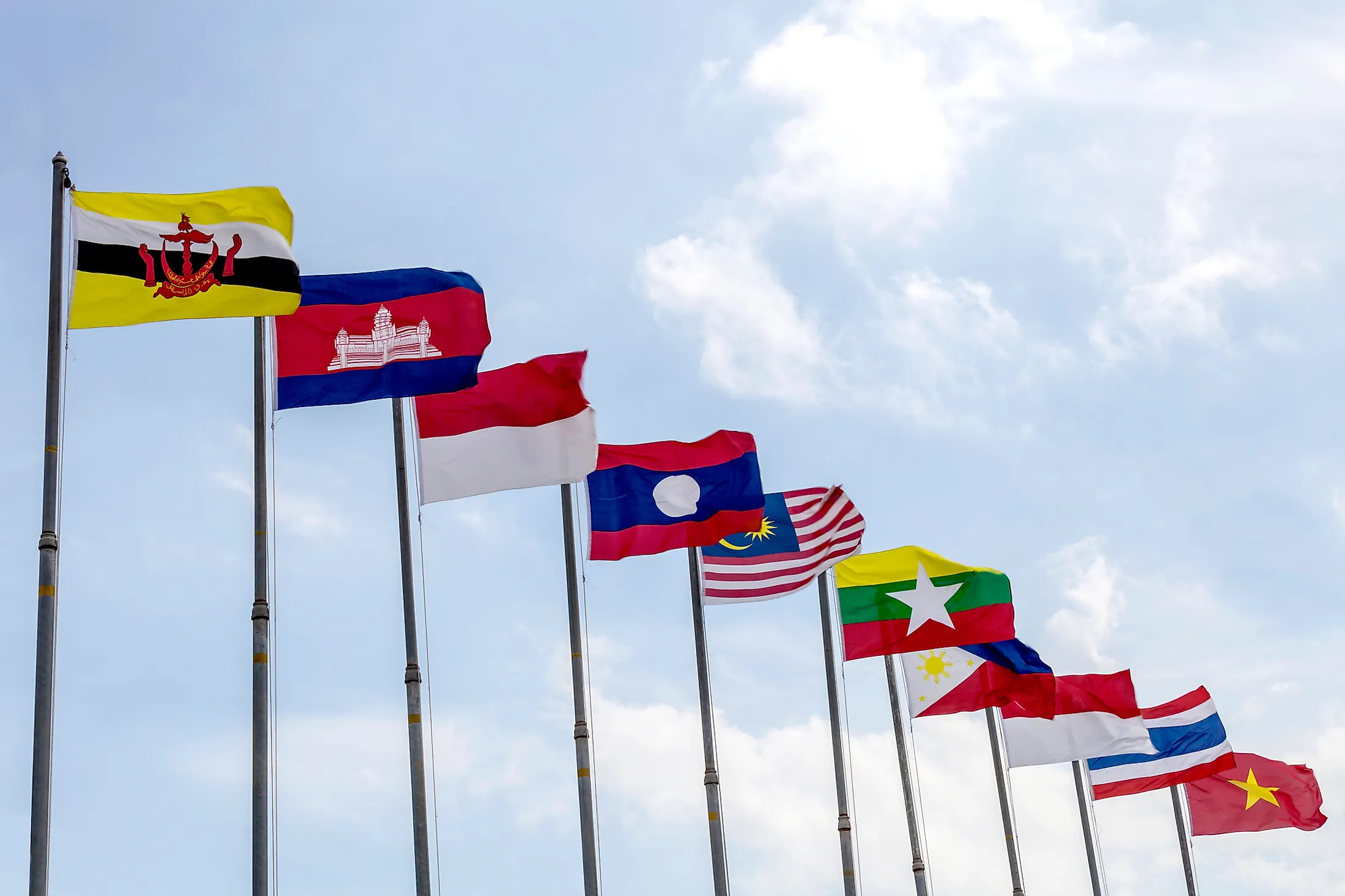
ASEAN Countries
ASEAN stands for the Association of Southeast Asian Nations. As its name implies, it is a grouping of countries in the region of Southeast Asia. The organization began with five members: Thailand, Malaysia, Indonesia, Singapore, and the Philippines. Over the next fifty years, however, this membership would double. It now includes the countries of Brunei, Vietnam, Cambodia, Myanmar (Burma), and Laos. Collectively, the membership of ASEAN has a population of approximately 650 million people and a Gross Domestic Product (GDP) of $2.8 trillion.
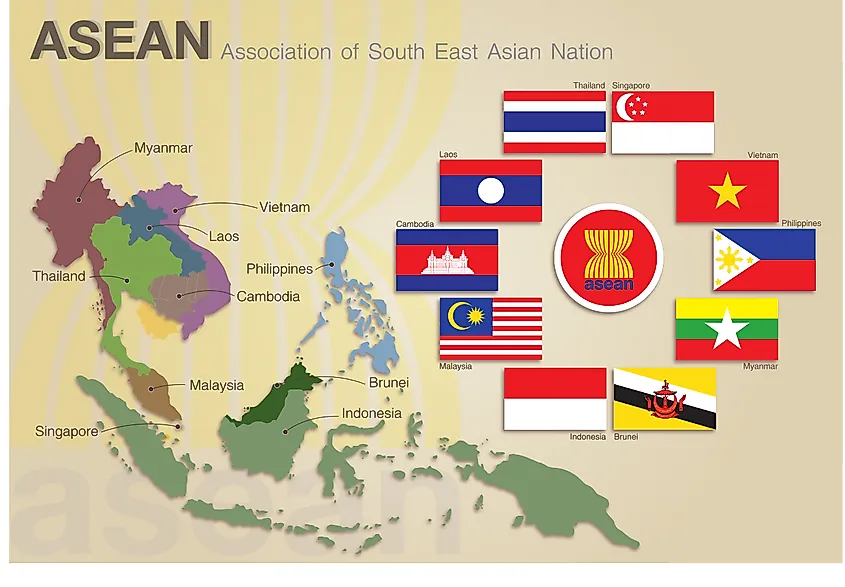
What Does ASEAN Do?
The goal of ASEAN is to promote political, economic, and security cooperation among its members. Numerous agreements have been attributed to the organization, including agreements on respecting the sovereignty of fellow members, collective security, free trade, economic growth, mutual economic assistance, and confronting terrorism. It is important to note, however, that although ASEAN promotes regional cooperation in a variety of fields, it is by no means the Southeast Asian equivalent of the European Union. The members of ASEAN have in no way ceded their sovereignty to the organization.
How Does ASEAN Work?
ASEAN is headed by a chair, which rotates annually among the member states. The chair is assisted by a secretariat, which is based in Jakarta, the capital of Indonesia. The highest policy-making body in ASEAN is the ASEAN Summit, which meets semi-annually, and is composed of the heads of state or government of all the organization’s members. Implementing and coordinating the policies set by the ASEAN leaders is the job of the ASEAN Coordinating Council (ACC). The ACC meets at least twice a year to prepare for the aforementioned ASEAN Summits. It is made up of the foreign ministers of ASEAN countries. Below the ACC are three Community Councils, which are based on what are known as the three pillars of ASEAN. These are the ASEAN Political-Security Community (APSC), the ASEAN Economic Community (AEC), and the ASEAN Socio-Cultural Community (ASCC).
ASEAN Flag
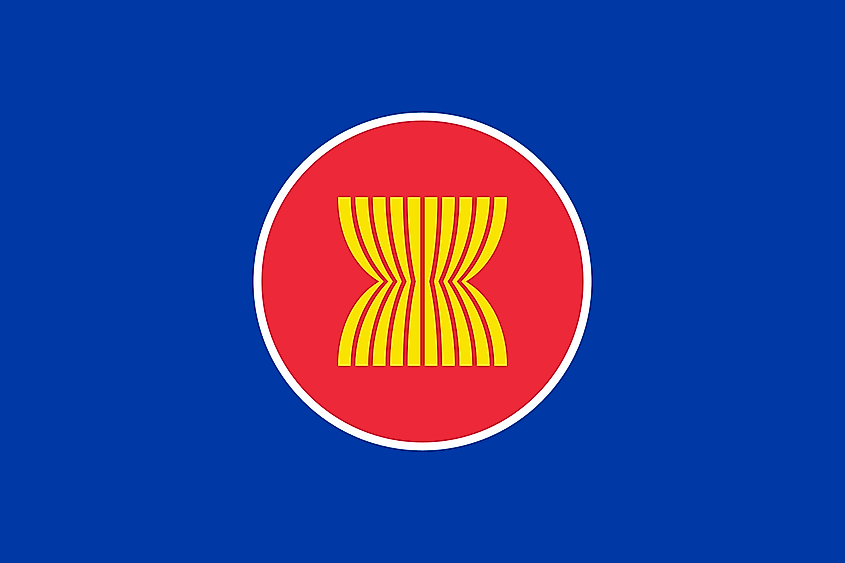
The flag of ASEAN consists of a red circle ringed by a white stripe on a blue field. Inside the red circle are yellow stocks of padi. The stocks of padi represents the goal of the organization’s founders for all Southeast Asian countries to be part of it, bound by friendship and solidarity. The colors of the flag represent the main colors that appear on the flags of ASEAN’s member states. The colors also represent certain ideas. Blue represents peace and stability; red signifies courage and dynamism; white is for purity, and yellow symbolizes prosperity.
History Of ASEAN
Formation
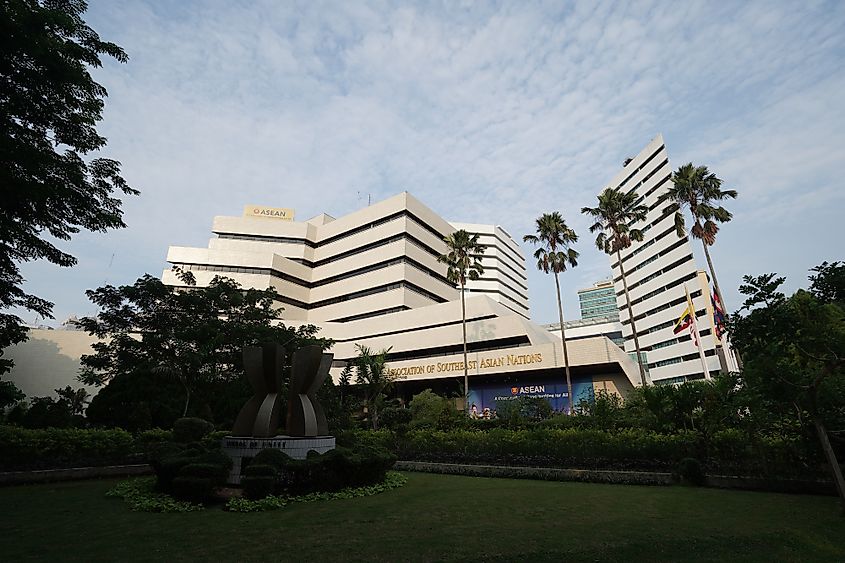
In 1967, Thailand was serving as a mediator between Indonesia, the Philippines, and Malaysia, in an attempt to resolve certain disputes between the three Southeast Asian states. These disputes were ultimately resolved, and a banquet was held to celebrate. It was during the banquet that Thanat Khoman, Thailand’s foreign minister, proposed the creation of an association of Southeast Asian countries to promote regional cooperation. Khoman then instructed the Thai Foreign Office to prepare a draft charter for the new association. In early August, Khoman convinced the foreign ministers of Indonesia, the Philippines, and Malaysia to meet him in an isolated Thai beach resort called Bang Sean. The foreign minister of Singapore also showed up, in the hopes that the island city-state would be welcomed into the new organization. On August 8, 1967, the foreign ministers of the five aforementioned countries signed a document declaring the formation of the Association of Southeast Asian Nations, otherwise known as the ASEAN Declaration.
Cooperation And Expansion
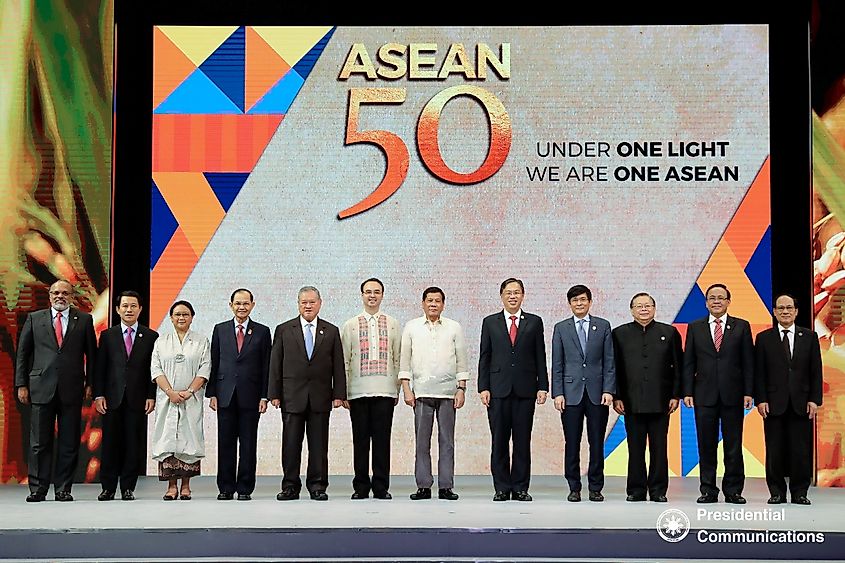
Nine years after ASEAN was created, its members signed the first major treaty under the organization’s auspices. This was the Treaty of Amity and Cooperation (TAC). Under the terms of this treaty, ASEAN members agreed to respect each other’s sovereignty, not to interfere in each other’s internal affairs, and resolve their disputes peacefully. The treaty also stressed cooperation amongst ASEAN members in order to promote regional peace and cooperation in all fields.
In 1984, ASEAN expanded its membership for the first time, admitting the small sultanate of Brunei into the organization. It was in the 1990s, however, that ASEAN expanded to include nearly the entire region of Southeast Asia. The opportunity to expand the organization came as a result of certain political developments, including the end of the Cold War, the end of the civil war in Cambodia, and the normalization of relations between the United States and Vietnam. Vietnam joined ASEAN in 1995, Laos and Myanmar joined in 1997, and Cambodia became a member in 1999.
As ASEAN expanded its membership, it also added to its list of agreements between its members. In 1992, for example, the organization’s members created the ASEAN Free Trade Area, with the ultimate goal of creating a common market. In 1995, ASEAN members signed a treaty committing themselves not to develop, acquire, or possess nuclear weapons. In the midst of the financial crisis of 1997, the members of ASEAN, along with non-members China, Japan, and South Korea, agreed to financially support each other to prevent currency speculation. The year 2007 saw the creation of ASEAN’s current institutions, including the aforementioned three Community Councils.
Future Challenges For ASEAN
Arguably, there are two major long-term challenges that ASEAN now faces. The first is economic integration. ASEAN has succeeded in increasing the amount of trade between its members. Whereas intra-ASEAN trade as a percentage of the bloc’s overall trade was 19% as of 1993, it was 23% in 2017. In addition, more than 90% of goods among the organization’s members are traded without tariffs. Nevertheless, economic integration remains stalled due in large part to the fact that there are significant disparities between the bloc’s various economies. In addition, some key sectors of the ASEAN economy are not covered by preferential trade measures.
The second great challenge that ASEAN must contend with is the security threat posed by the People’s Republic of China, especially in regards to the South China Sea. Several ASEAN members have territorial claims in the South China Sea, such as the disputed Spratly Islands. For its part, China views the entire South China Sea as its territory, which has caused great friction with the members of ASEAN.











